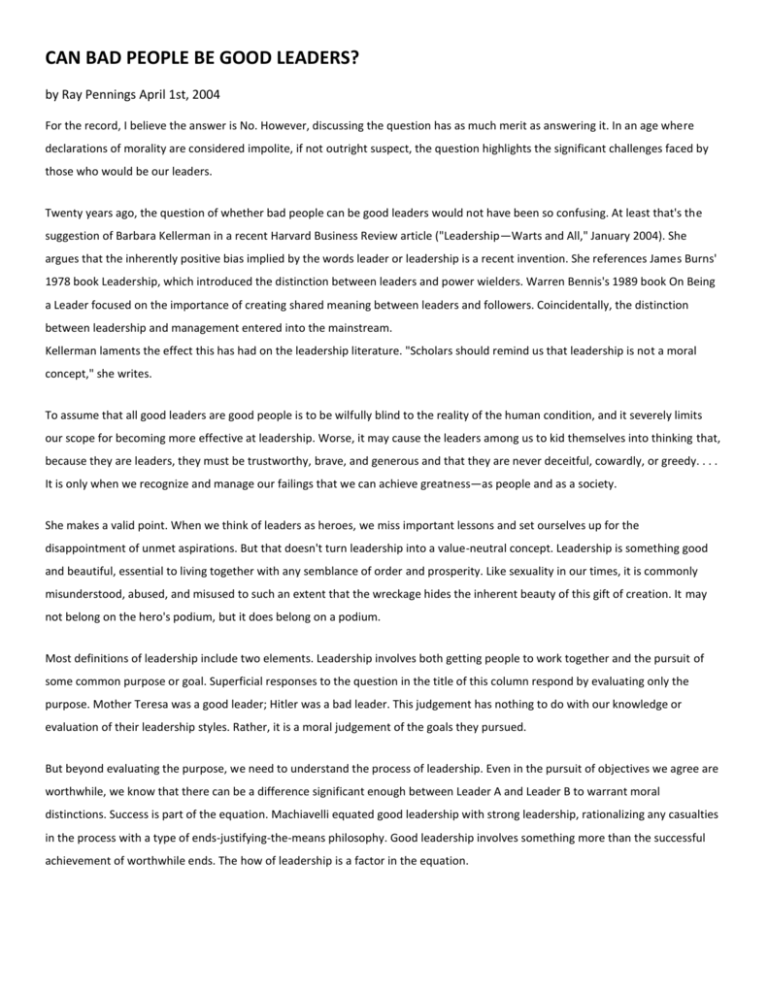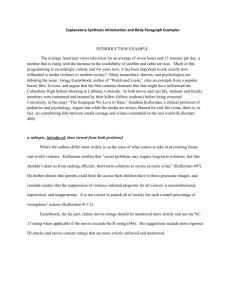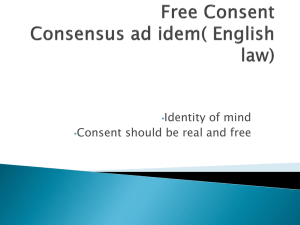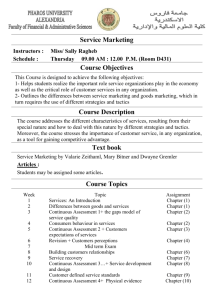can bad people be good leaders
advertisement

CAN BAD PEOPLE BE GOOD LEADERS? by Ray Pennings April 1st, 2004 For the record, I believe the answer is No. However, discussing the question has as much merit as answering it. In an age where declarations of morality are considered impolite, if not outright suspect, the question highlights the significant challenges faced by those who would be our leaders. Twenty years ago, the question of whether bad people can be good leaders would not have been so confusing. At least that's the suggestion of Barbara Kellerman in a recent Harvard Business Review article ("Leadership—Warts and All," January 2004). She argues that the inherently positive bias implied by the words leader or leadership is a recent invention. She references James Burns' 1978 book Leadership, which introduced the distinction between leaders and power wielders. Warren Bennis's 1989 book On Being a Leader focused on the importance of creating shared meaning between leaders and followers. Coincidentally, the distinction between leadership and management entered into the mainstream. Kellerman laments the effect this has had on the leadership literature. "Scholars should remind us that leadership is not a moral concept," she writes. To assume that all good leaders are good people is to be wilfully blind to the reality of the human condition, and it severely limits our scope for becoming more effective at leadership. Worse, it may cause the leaders among us to kid themselves into thinking that, because they are leaders, they must be trustworthy, brave, and generous and that they are never deceitful, cowardly, or greedy. . . . It is only when we recognize and manage our failings that we can achieve greatness—as people and as a society. She makes a valid point. When we think of leaders as heroes, we miss important lessons and set ourselves up for the disappointment of unmet aspirations. But that doesn't turn leadership into a value-neutral concept. Leadership is something good and beautiful, essential to living together with any semblance of order and prosperity. Like sexuality in our times, it is commonly misunderstood, abused, and misused to such an extent that the wreckage hides the inherent beauty of this gift of creation. It may not belong on the hero's podium, but it does belong on a podium. Most definitions of leadership include two elements. Leadership involves both getting people to work together and the pursuit of some common purpose or goal. Superficial responses to the question in the title of this column respond by evaluating only the purpose. Mother Teresa was a good leader; Hitler was a bad leader. This judgement has nothing to do with our knowledge or evaluation of their leadership styles. Rather, it is a moral judgement of the goals they pursued. But beyond evaluating the purpose, we need to understand the process of leadership. Even in the pursuit of objectives we agree are worthwhile, we know that there can be a difference significant enough between Leader A and Leader B to warrant moral distinctions. Success is part of the equation. Machiavelli equated good leadership with strong leadership, rationalizing any casualties in the process with a type of ends-justifying-the-means philosophy. Good leadership involves something more than the successful achievement of worthwhile ends. The how of leadership is a factor in the equation. The multitude of tactics available to leaders can be divided into four categories: coercion, position, expertise, and relationship. Coercion. I can be coerced either by the fear of negative consequence or by the promise of a positive reward. The motive impelling the behaviour is not the behaviour itself but rather the consequence of the behaviour. Working for a paycheck, obeying the speed limit, or testifying against my friend in court are all examples of behaviours that are prompted by some form of coercion. Position. I do what certain people tell me because I believe I ought to obey them. It's not that the consequences of not regarding the chairman at a meeting are that fearful. Rather, it is a respect for the office or position that prompts me to be quiet when I am asked by the chair, to join the line as the security guard tells me, or to accept the request to volunteer made by my supervisor, purely out of some sense of obligation. Expertise. If I think you know more about the subject than I do, I am likely to follow your advice. My rational being impels me to. Relationship. I am inclined to do things for people I know simply because I know them. If I like them, I am even more inclined to follow them. All of these tactics are appropriate in given circumstances; none of them are always right or always wrong. Part of what separates good leadership from bad leadership is the ability to utilize the right tactic in a given circumstance. But there is more. Leadership is influence with a purpose. Noted leadership author Max De Pree is perhaps best known for the trilogy of tasks he assigns to the leader in his book Leadership Is an Art: "The first responsibility of a leader is to define reality. The last is to say thank you. In between the two, the leader must become a servant and a debtor." Defining reality. This includes articulating and selling the mission. It also includes knowing the opportunities and threats, strengths and weaknesses that need to be dealt with on the journey. Saying thanks. Those who accomplish their goals with the help of inanimate machines are technicians, not leaders. The work of leadership involves other human beings. Leadership that lasts affirms the humanity of those with whom they work. Being a servant and a debtor. Utilizing position is one of the tactics of influence, but leadership that relies on the ethic of mastery and taking credit is rarely called good leadership and seldom is successful in the long term. So if skill and competence are part of the good leadership equation, character is certainly another. James Kouzes and Barry Posner have collected data since the 1980s on what people look for in a leader. Four characteristics consistently rank well above the rest: honesty, forward-looking, inspiring, and competence. Honesty ranks number one by a significant margin. As Kouzes and Posner put it, "If people are going to follow someone willingly, whether it be into battle or into the boardroom, they first want to assure themselves that the person is worthy of their trust." So does the view that the concept of leadership involves character, competence, and technique that has some long-term success amount to a "skewed moralistic understanding of leadership" against which Kellerman warns? How do we deal with the obvious evidence that leadership isn't always noble and praiseworthy? Both good and bad people climb into the driver's seat of leadership, manipulating the available controls, sometimes with great skill and dexterity, and other times with less. But the measure of leadership isn't a test of driving skills, as if it makes no difference whether one intends to drive around a track for the purpose of showing off skill or taking the passengers to a worthy destination. The 9-11 terrorists who flew planes into buildings are not leaders, regardless of how much skill they demonstrated in flying the plane. There are lessons about technique to be learned from bad leaders, but we need to distinguish between technique, an element of leadership, and leadership itself. Good and evil run through the human heart—also the hearts of leaders—and so making absolute distinctions can be difficult. But the difficulty of applying distinctions is no reason to euthanize them. The success of leadership involves inspiring people, and that involves holding before them worthwhile goals and affirming the gifts of their humanity, including their gift of free choice, in working together to achieve those goals. Even when the tactics of coercion are utilized, they must be utilized in a manner that maintains respect for the imago dei imprinted on each person. The choice may be for or against an action with an understood consequence, but enabling that choice on the part of the follower is an imperative duty of the leader. Kellerman says that to suggest good leaders are always good people is "to be blind to the human condition." Greatness, she says, comes from "recognizing and managing our failings." True, but not the whole truth. Good leadership does include a goodness that comes from more than technique. To ignore the fact that followers around the world seek leaders who inspire them to worthwhile goals they can share in a trustworthy manner is to be equally blind to the human condition. If the following of leaders is the result of free choice, leaders need to work in manner that affirms the humanity of the follower. Neither of these are value-neutral conditions, but neither are they natural to our broken world and sinful hearts. Finding ways of translating this theory into practice is at the heart of the leader's art. RAY PENNINGS is a co-founder of Cardus and currently serves as its Executive Vice President, working out of the Calgary office. He has long experience in Canadian industrial relations, as well as public policy, political activism, and political affairs generally. He has headed several of Cardus' largest research projects over the years, including a monumental education survey which led to the Cardus Religious Schools Initiative in association with the University of Notre Dame. Ray is a respected voice in Canadian politics as well, having held senior positions on campaign teams at municipal, provincial, and federal levels. Ray did his under-graduate at McMaster University and holds a Masters of Arts in Religion from Puritan Theological Seminary.






